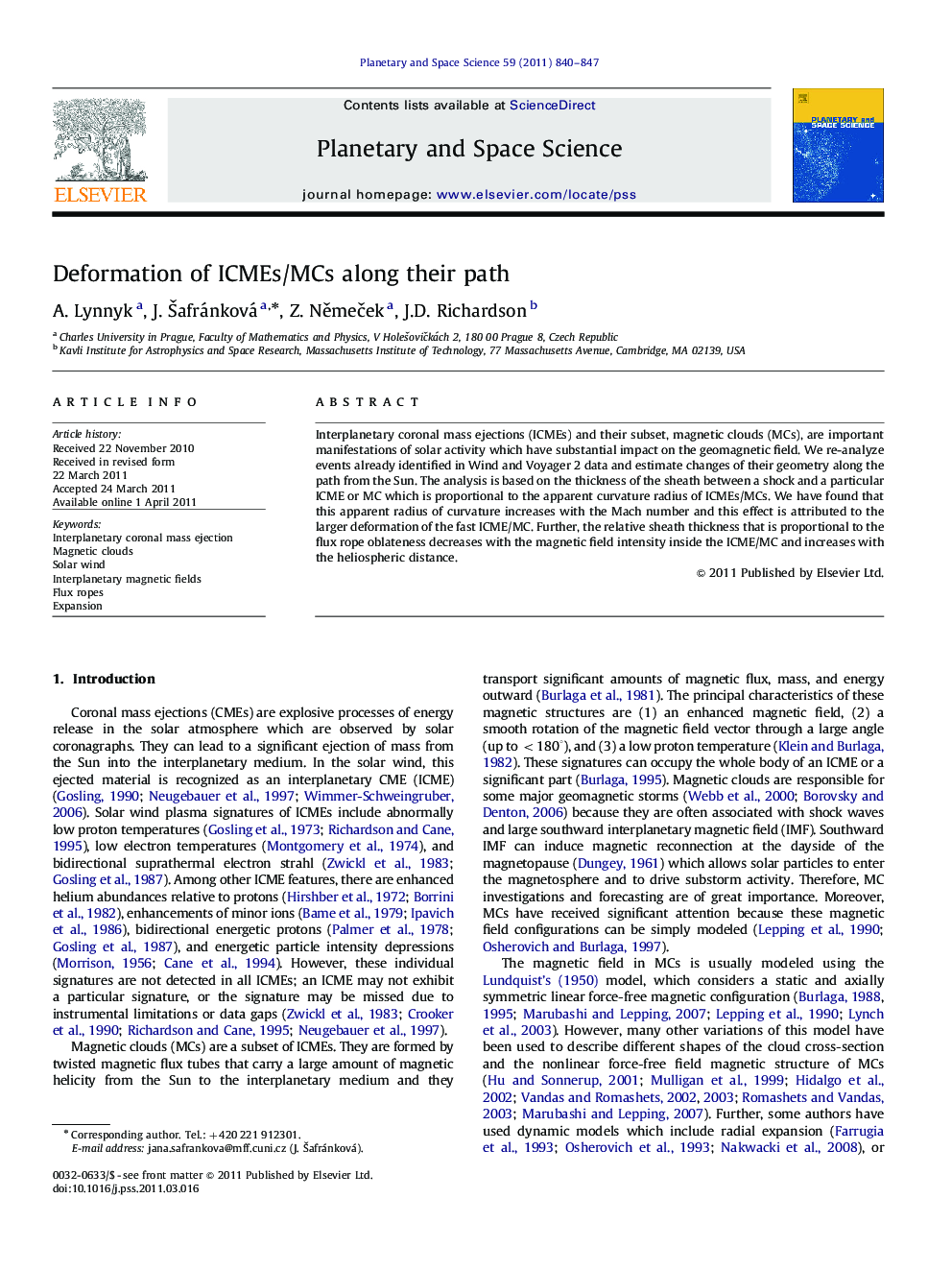| Article ID | Journal | Published Year | Pages | File Type |
|---|---|---|---|---|
| 1781674 | Planetary and Space Science | 2011 | 8 Pages |
Interplanetary coronal mass ejections (ICMEs) and their subset, magnetic clouds (MCs), are important manifestations of solar activity which have substantial impact on the geomagnetic field. We re-analyze events already identified in Wind and Voyager 2 data and estimate changes of their geometry along the path from the Sun. The analysis is based on the thickness of the sheath between a shock and a particular ICME or MC which is proportional to the apparent curvature radius of ICMEs/MCs. We have found that this apparent radius of curvature increases with the Mach number and this effect is attributed to the larger deformation of the fast ICME/MC. Further, the relative sheath thickness that is proportional to the flux rope oblateness decreases with the magnetic field intensity inside the ICME/MC and increases with the heliospheric distance.
► We re-analyze ICME and MC events and estimate changes of their geometry along the path. ► We use the thickness of the sheath between a shock and a ICME/MC to determine their curvature radius. ► The sheath thickness increases with the Mach number. ► The sheath thickness decreases with the magnetic field intensity inside the ICME/MC. ► If the magnetic field inside the ICME/MC is much stronger than that in the ambient solar wind, the ICME/MC cross-section is closer to circular.
